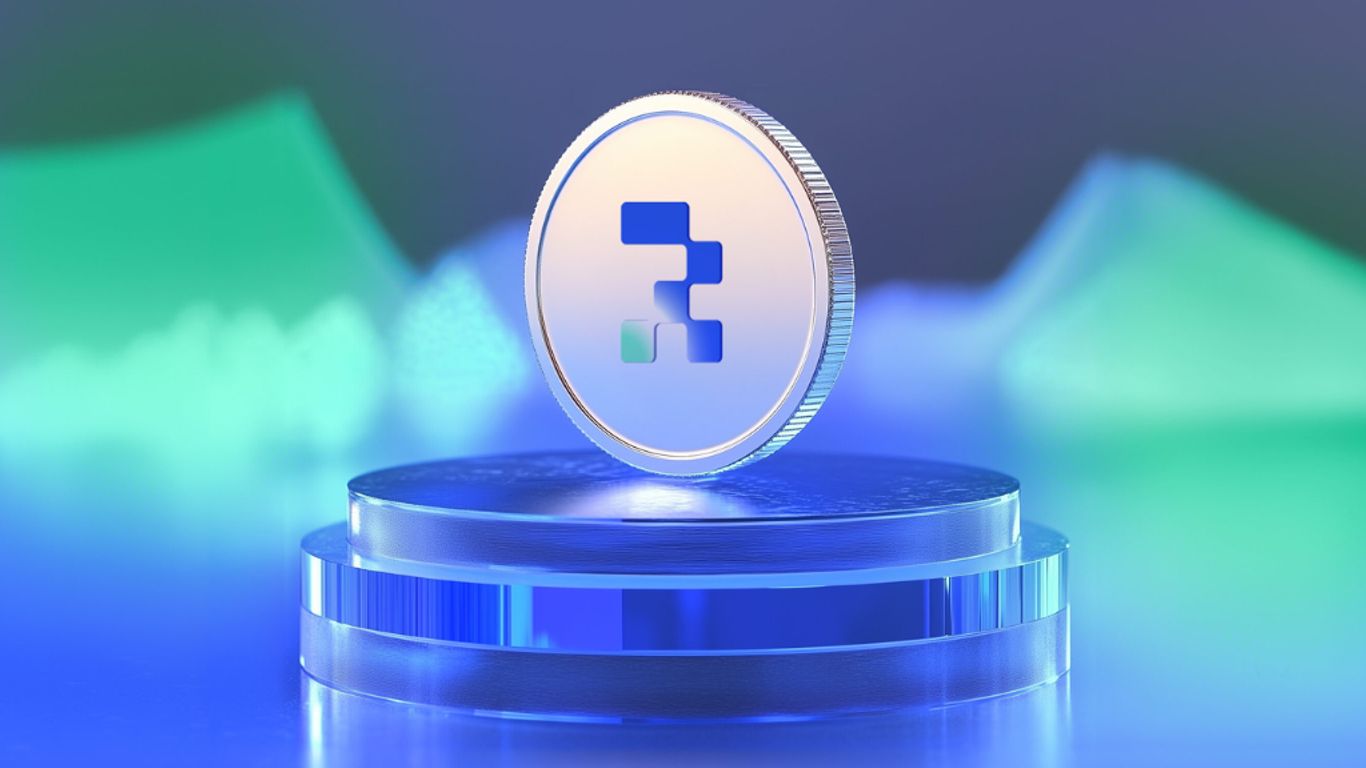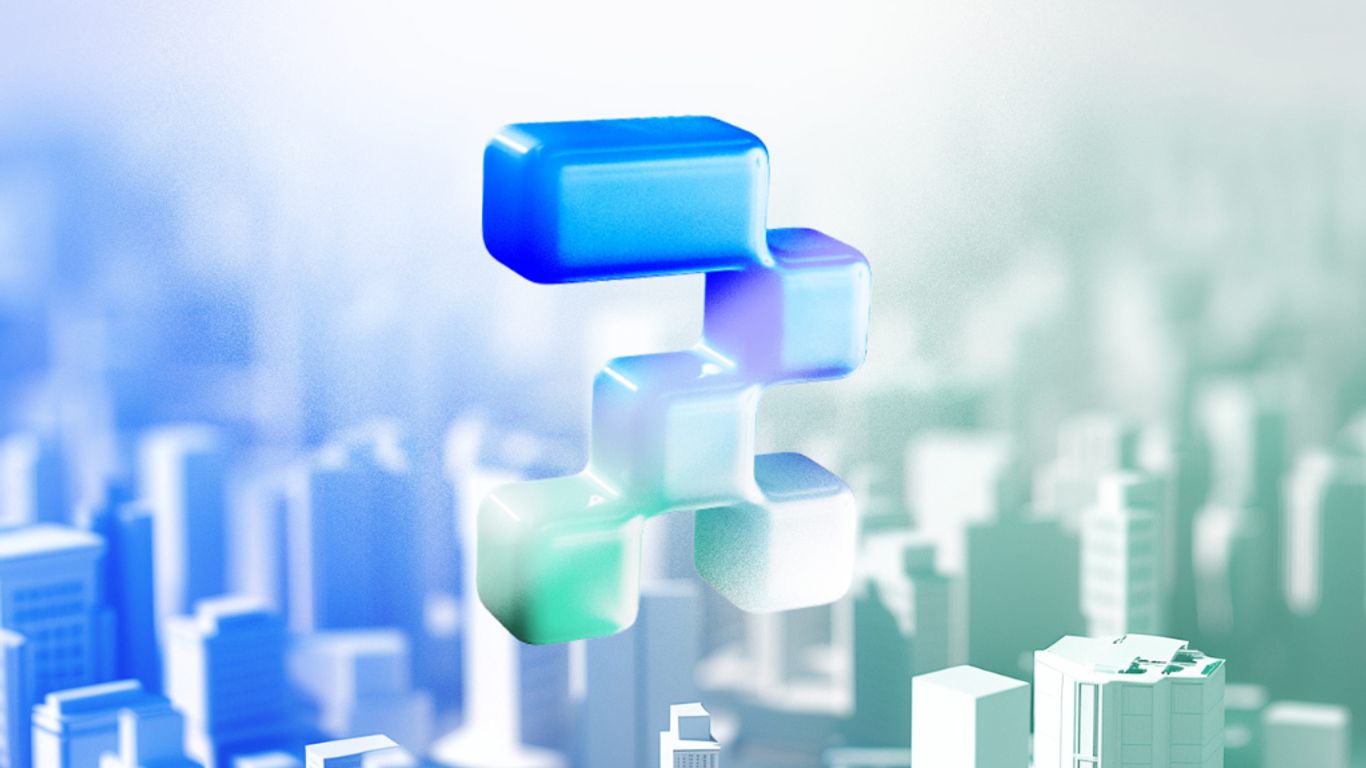Tokenization of real-world assets (RWAs) is changing the way we think about finance. By using blockchain technology, we can turn physical assets like real estate and art into digital tokens. This allows more people to invest in things that were once too expensive or complicated. In this article, we'll explore how RWA tokenization connects traditional finance with decentralized finance, making investing easier and more accessible for everyone.
Key Takeaways
- RWA tokenization makes it easier for people to invest in valuable assets.
- Blockchain technology ensures secure and transparent ownership of assets.
- Tokenization allows for fractional ownership, meaning you can buy a small part of a big asset.
- This process helps bridge the gap between traditional finance and decentralized finance (DeFi).
- Investing in tokenized assets can open up new opportunities for both individuals and institutions.
Understanding Tokenized Debt Instruments
Definition and Key Features
Tokenized debt instruments are digital representations of traditional debt assets, such as bonds or loans, on a blockchain. This process allows for easier trading and management of these assets. Key features include:
- Fractional Ownership: Investors can buy smaller portions of a debt instrument, making it more accessible.
- Transparency: All transactions are recorded on the blockchain, ensuring clear ownership and transaction history.
- Efficiency: Automated processes reduce the time and cost associated with traditional debt management.
Types of Tokenized Debt Instruments
There are several types of tokenized debt instruments, including:
- Tokenized Bonds: Digital versions of traditional bonds that can be traded on blockchain platforms.
- Asset-Backed Tokens: These are backed by physical assets, providing security to investors.
- Decentralized Loans: Loans that are issued and managed through smart contracts on a blockchain.
Benefits Over Traditional Debt Instruments
Tokenized debt instruments offer several advantages compared to traditional methods:
- Increased Liquidity: Tokenization allows for easier buying and selling of debt instruments, enhancing market liquidity.
- Lower Costs: Reduced need for intermediaries can lead to lower transaction fees.
- Global Access: Investors from anywhere in the world can participate, broadening the market.
Tokenization is a game-changer, making investments more accessible and efficient for everyone.
The Role of Blockchain in Tokenized Debt Instruments
Blockchain Technology Overview
Blockchain technology is a secure and transparent way to record transactions. It acts as a digital ledger that keeps track of all transactions across a network. This means that every time a transaction happens, it is recorded in a way that cannot be changed. This is important for tokenized debt instruments because it helps ensure that ownership and transaction history are clear and trustworthy.
Smart Contracts and Their Importance
Smart contracts are self-executing contracts with the terms of the agreement directly written into code. They automatically enforce and execute the terms of a deal without needing a middleman. This reduces costs and speeds up transactions. For tokenized debt instruments, smart contracts can help automate payments and ensure that all parties meet their obligations.
Security and Transparency
One of the biggest advantages of using blockchain for tokenized debt instruments is the increased security and transparency it offers. Each transaction is recorded on a public ledger, making it easy to verify ownership and transaction history. This reduces the risk of fraud and builds trust among investors.
In summary, blockchain technology plays a crucial role in the development of tokenized debt instruments by enhancing security, transparency, and efficiency. This makes it easier for investors to participate in the market and for companies to raise funds.
Market Trends in Tokenized Debt Instruments
Current Market Size and Growth
The market for tokenized debt instruments is rapidly expanding. The total value of tokenized assets has increased substantially, with projections indicating that the market could reach up to $5 trillion in the near term. This growth is driven by the increasing integration of blockchain technology across various sectors, enabling the digital representation of physical assets.
Key Players and Platforms
Several key players are leading the charge in the tokenization of debt instruments. Notable platforms include:
- Backed Finance: Specializes in creating tokenized RWAs, including stocks and bonds.
- TokenFi: Focuses on bridging traditional finance with DeFi through tokenization.
- RWA Hub: Offers a comprehensive suite of tools for asset tokenization.
Future Projections
Looking ahead, the tokenization market is expected to continue its upward trajectory. Factors contributing to this growth include:
- Increased Institutional Adoption: Major financial institutions are exploring tokenization to enhance liquidity and efficiency.
- Regulatory Evolution: As regulations adapt, clearer guidelines will boost investor confidence.
- Technological Advancements: Improvements in blockchain technology will make tokenization more viable for a broader range of assets.
The tokenization of debt instruments is not just a trend; it represents a fundamental shift in how we view and manage assets in the financial landscape.
In summary, the market for tokenized debt instruments is on a robust growth trajectory, driven by technological advancements, regulatory developments, and increasing market acceptance. As this market matures, it will likely transform numerous aspects of asset trading and management, making investments more accessible and markets more efficient.
Regulatory Landscape for Tokenized Debt Instruments
Existing Regulations and Guidelines
The regulatory environment for tokenized debt instruments is complex and evolving. Different countries have various rules that can affect how these instruments are issued and traded. For instance, in the U.S., the SEC has been active in setting guidelines, while Europe has its own set of regulations like MiFID II and MiCA that focus on investor protection and transparency.
Compliance Challenges
Many companies face challenges in ensuring they meet all the legal requirements. This includes:
- Understanding different regulations in various countries.
- Ensuring that tokens comply with securities laws.
- Navigating the complexities of anti-money laundering (AML) and know your customer (KYC) rules.
Future Regulatory Developments
As tokenization becomes more popular, we can expect more clear regulations to emerge. Governments and regulatory bodies are working to create frameworks that will help guide the industry. This will likely lead to increased investor confidence and broader adoption of tokenized debt instruments.
The regulatory landscape for tokenizing sovereign debt is complex and evolving. Governments and regulatory bodies worldwide are grappling with how to adapt to these changes while ensuring investor protection and market integrity.
Integrating Tokenized Debt Instruments with Traditional Finance
Bridging the Gap Between TradFi and DeFi
Integrating tokenized debt instruments with traditional finance (TradFi) is essential for creating a seamless financial ecosystem. Tokenization allows traditional assets to be represented digitally, making them easier to trade and manage. This process helps in bridging the gap between the two worlds, enabling investors to access a wider range of assets.
Institutional Adoption
Many financial institutions are beginning to recognize the potential of tokenized debt instruments. They are exploring ways to incorporate these digital assets into their portfolios. This shift is driven by the need for greater liquidity and efficiency in asset management. As institutions adopt these technologies, they pave the way for broader acceptance in the market.
Case Studies
- Real Estate Tokenization: By tokenizing property titles, blockchain can streamline real estate transactions, reduce paperwork, and eliminate traditional barriers such as lengthy background checks and the need for multiple intermediaries.
- Art and Collectibles: Tokenization enhances trading in the art market, allowing for better verification of authenticity and provenance without third-party verification.
- Commodity Tokenization: Tokenizing commodities like gold or oil simplifies trading and logistics, allowing for more flexible ownership structures.
Tokenization of real-world assets promises a more efficient and convenient system for tracking ownership, rights, and liabilities.
Summary
The integration of tokenized debt instruments with traditional finance is a significant step towards a more inclusive and efficient financial system. As more institutions adopt these technologies, the potential for innovation and growth in the financial sector will continue to expand. This evolution not only enhances accessibility but also fosters a more connected global economy.
Technological Infrastructure for Tokenized Debt Instruments
Blockchain Platforms and Protocols
Tokenized debt instruments rely heavily on blockchain technology to function effectively. This technology provides a secure and transparent way to record transactions. Different blockchain platforms, like Ethereum and Binance Smart Chain, offer various protocols that support the creation and management of tokenized assets. These platforms enable the centralized use of decentralized technology, allowing for efficient asset management and trading.
Interoperability Solutions
For tokenized debt instruments to thrive, they must be able to interact with various blockchain networks. Interoperability solutions are essential for this purpose. They allow different blockchains to communicate, making it easier for users to trade and manage their assets across platforms. This capability enhances liquidity and broadens market access for investors.
Security Measures
Security is a top priority in the world of tokenized assets. Implementing robust security measures is crucial to protect against fraud and hacking. This includes using multi-signature wallets, regular audits, and advanced encryption techniques. By ensuring that assets are secure, platforms can build trust with users and encourage wider adoption of tokenized debt instruments.
Tokenization is not just about technology; it’s about creating a secure and efficient system that benefits all participants in the market.
In summary, the technological infrastructure for tokenized debt instruments is built on blockchain platforms, interoperability solutions, and strong security measures. These elements work together to create a reliable and efficient environment for trading and managing tokenized assets.
Investment Opportunities in Tokenized Debt Instruments
Retail vs. Institutional Investment
Tokenized debt instruments offer unique opportunities for both retail and institutional investors. Retail investors can access high-value assets with lower capital requirements, while institutional investors can diversify their portfolios with tokenized assets that provide liquidity and transparency.
Risk and Return Analysis
Investing in tokenized debt instruments involves understanding the associated risks and potential returns. Here’s a simple breakdown:
Diversification Strategies
Investors can use tokenized debt instruments to diversify their portfolios. Here are some strategies:
- Asset Class Diversification: Invest in various types of tokenized assets like real estate, bonds, and commodities.
- Geographic Diversification: Consider tokenized assets from different regions to spread risk.
- Time Diversification: Invest in different maturities of debt instruments to manage interest rate risk.
Tokenized debt instruments are reshaping the investment landscape, making it easier for everyone to participate in the market. By exploring these opportunities, investors can tap into a new realm of financial growth.
Challenges and Risks in Tokenized Debt Instruments

Technical Challenges
Tokenized debt instruments face several technical hurdles. These include:
- Smart Contract Vulnerabilities: Smart contracts can have bugs or security flaws that may lead to asset loss.
- Interoperability Issues: Different blockchain platforms may not work well together, making it hard to transfer assets.
- Scalability: As more users join, the system must handle increased transactions without slowing down.
Market Liquidity Issues
Liquidity is crucial for any financial market. Tokenized debt instruments may struggle with:
- Limited Trading Volume: If not enough people are buying or selling, it can be hard to find a buyer or seller.
- Price Volatility: Prices can change quickly, making it risky for investors.
Legal and Regulatory Risks
The legal landscape for tokenized assets is still developing. Key concerns include:
- Compliance with Regulations: Different countries have different rules, which can complicate trading.
- Ownership Rights: Ensuring that token holders have clear rights can be challenging.
Tokenization is a new and rapidly growing financial innovation in crypto asset markets, and we discuss potential benefits and challenges.
Summary
In summary, while tokenized debt instruments offer exciting opportunities, they also come with significant challenges. Addressing these issues is essential for the growth and acceptance of this innovative financial product.
The Future of Tokenized Debt Instruments
Innovative Use Cases
The future of tokenized debt instruments is bright, with new use cases emerging every day. Tokenization can transform various assets, making them more accessible and easier to trade. Here are some potential use cases:
- Real Estate: Tokenizing property can allow multiple investors to own a fraction of a property, lowering the barrier to entry.
- Art and Collectibles: Tokenizing art pieces can help artists and collectors verify ownership and authenticity.
- Debt Instruments: Traditional loans can be tokenized, allowing for easier trading and liquidity.
Potential Impact on Global Finance
Tokenization is set to change the landscape of global finance. By making assets more liquid and accessible, it can lead to:
- Increased Participation: More investors can enter the market, leading to a broader investment base.
- Enhanced Efficiency: Transactions can be completed faster and with fewer intermediaries, reducing costs.
- Greater Transparency: Blockchain technology ensures that all transactions are recorded and verifiable, reducing fraud.
Predictions and Trends
Experts predict that the market for tokenized debt instruments will grow significantly. Here are some trends to watch:
- Regulatory Evolution: As tokenization gains traction, regulations will adapt to provide clearer guidelines.
- Technological Advancements: Improvements in blockchain technology will enhance security and functionality.
- Diversification of Assets: The range of tokenized assets will expand beyond real estate and art to include various financial instruments.
In conclusion, the future of tokenized debt instruments is promising, with the potential to revolutionize how we invest and manage assets. Tokenization could be a giant leap for securities, making finance more inclusive and efficient.
Case Studies of Successful Tokenized Debt Instruments
Notable Projects and Initiatives
Tokenization is changing how we view investments. Here are some notable projects that showcase its potential:
- TokenFi: This platform bridges traditional finance and DeFi by tokenizing assets like real estate and art. It allows investors to buy smaller shares, making it easier for more people to invest.
- RWA Hub: Focused on real-world assets, RWA Hub uses blockchain to enhance transparency and security in asset management. It allows for easier trading of assets like commodities and real estate.
- Art Tokenization: Artists can tokenize their works, allowing fans to own a piece of art without buying the whole piece. This supports artists and makes art investment more accessible.
Lessons Learned
From these projects, we can see:
- Accessibility: Tokenization lowers barriers for investors, allowing more people to participate in markets that were once exclusive.
- Liquidity: Tokenized assets can be traded easily, improving market efficiency.
- Security: Blockchain technology ensures that ownership records are secure and transparent.
Impact on the Market
The rise of tokenized debt instruments is reshaping the financial landscape. As more projects emerge, we can expect:
- Increased Adoption: More investors will turn to tokenized assets as they become more familiar with the technology.
- Regulatory Changes: As tokenization grows, regulations will likely evolve to accommodate this new way of investing.
- Market Growth: The total addressable market for tokenized assets is projected to reach $16 trillion by the end of the decade, indicating a significant shift in how assets are managed and traded.
How to Get Started with Tokenized Debt Instruments
Choosing the Right Platform
To begin your journey into tokenized debt instruments, selecting the right platform is crucial. Here are some popular options:
- RWA Hub: Focuses on real-world asset tokenization.
- TokenFi: Bridges traditional finance and DeFi.
- Backed Finance: Specializes in asset-backed tokens.
Investment Strategies
When investing in tokenized debt instruments, consider these strategies:
- Diversification: Spread your investments across different assets to reduce risk.
- Research: Understand the underlying assets and their market conditions.
- Risk Assessment: Evaluate your risk tolerance before investing.
Legal and Compliance Considerations
Before diving in, ensure you understand the legal and compliance aspects:
- Familiarize yourself with local regulations regarding tokenized assets.
- Ensure the platform you choose complies with KYC (Know Your Customer) and AML (Anti-Money Laundering) regulations.
Tokenization is the process of creating a digital representation of an asset by issuing a blockchain-based token. This transformation is changing global finance.
By following these steps, you can effectively navigate the world of tokenized debt instruments and make informed investment decisions.
Conclusion
In conclusion, the tokenization of real-world assets (RWAs) is changing the way we think about investing. By turning physical items like real estate and art into digital tokens, we make it easier for everyone to invest. This new method not only opens up opportunities for small investors but also helps traditional finance and decentralized finance work together. As technology improves and rules become clearer, we can expect more people to join this exciting market. The future looks bright for RWA tokenization, promising a more open and efficient financial world.
Frequently Asked Questions
What is RWA tokenization?
RWA tokenization is the process of turning real-world assets, like real estate or art, into digital tokens on a blockchain. This makes it easier to buy, sell, and trade these assets.
How does tokenization benefit investors?
Tokenization allows investors to own small parts of expensive assets, making it easier for more people to invest. It also makes transactions faster and cheaper.
What types of assets can be tokenized?
Many types of assets can be tokenized, including real estate, art, stocks, and even loans. Basically, if it's valuable, it can likely be turned into a token.
What role does blockchain play in RWA tokenization?
Blockchain provides a secure and transparent way to record ownership of these assets. It ensures that every transaction is recorded and cannot be changed.
Are there risks involved with RWA tokenization?
Yes, there are risks, such as market volatility and regulatory challenges. It's important for investors to do their research and understand these risks.
How can I get started with investing in tokenized assets?
You can start by choosing a platform that offers tokenized assets. Make sure to check if they are regulated and secure.
What is the future of RWA tokenization?
The future looks bright, with more people and institutions likely to adopt tokenization. This could lead to more investment opportunities and better access to assets.
How does RWA tokenization connect traditional finance and DeFi?
RWA tokenization acts as a bridge by making traditional assets available on decentralized platforms, allowing for more innovative financial products.




